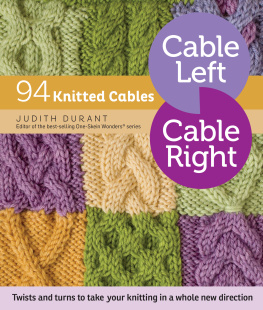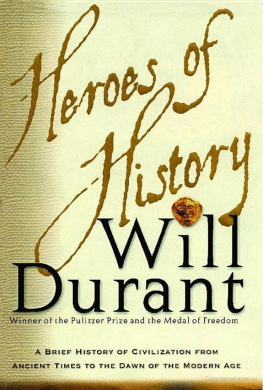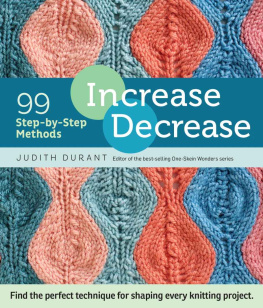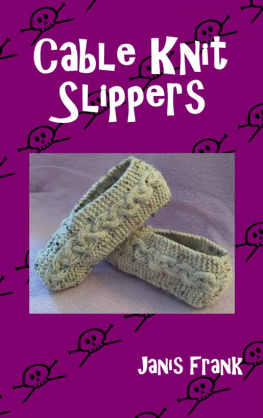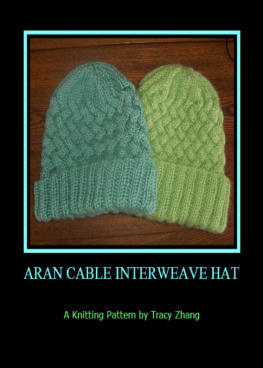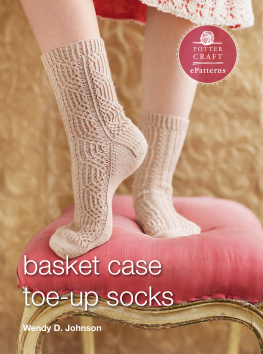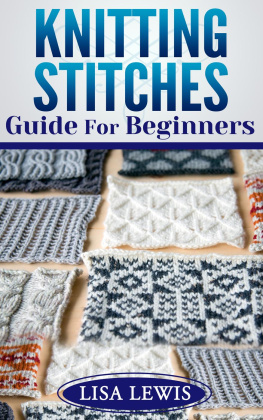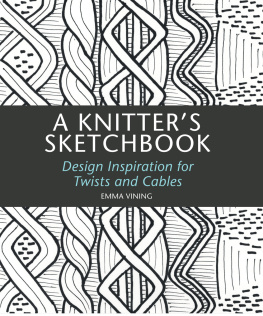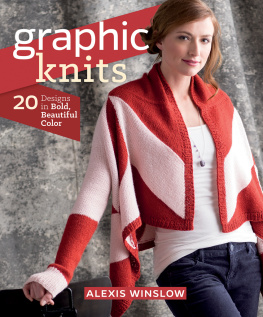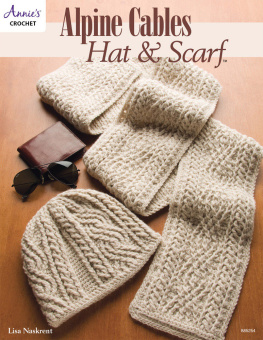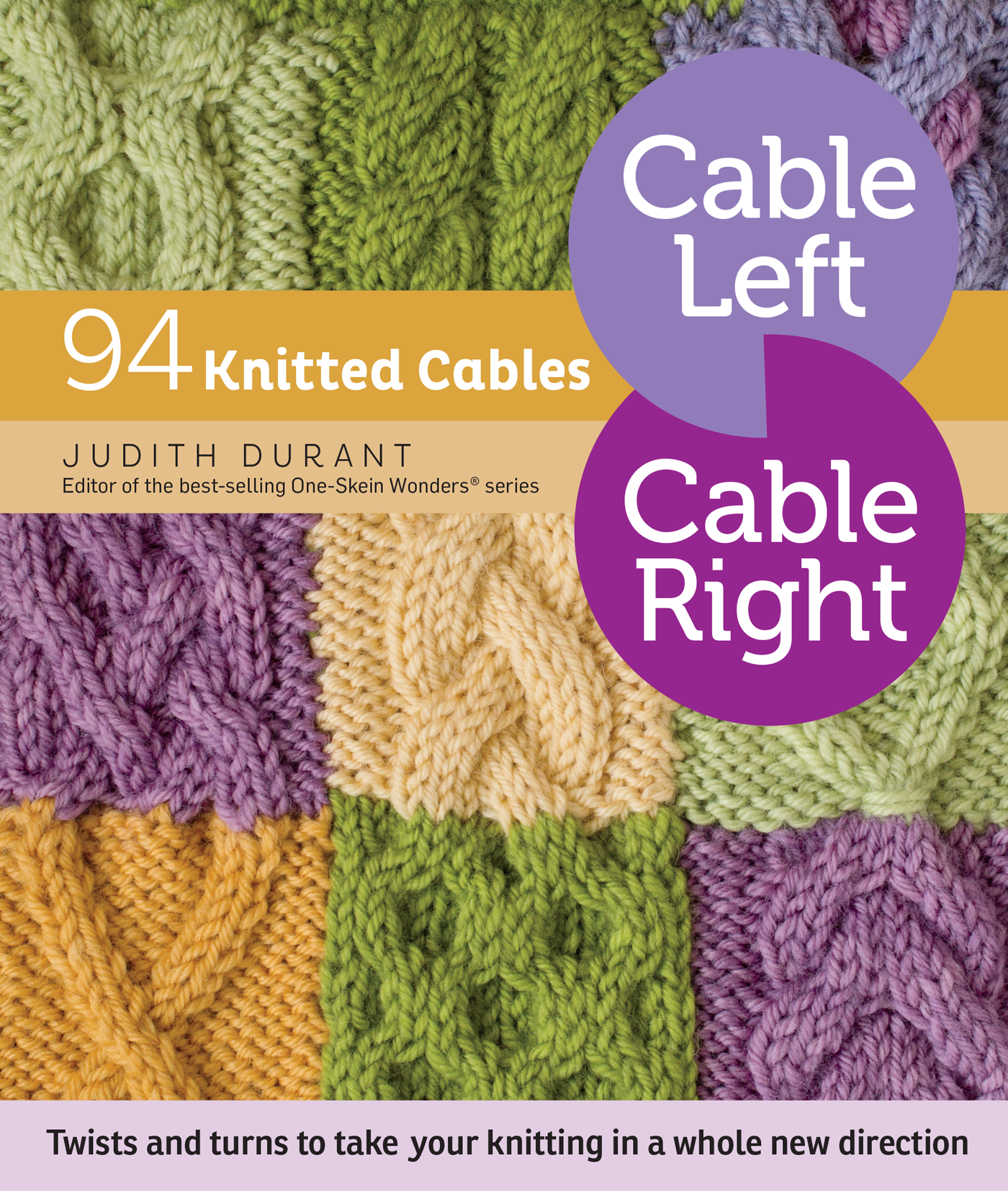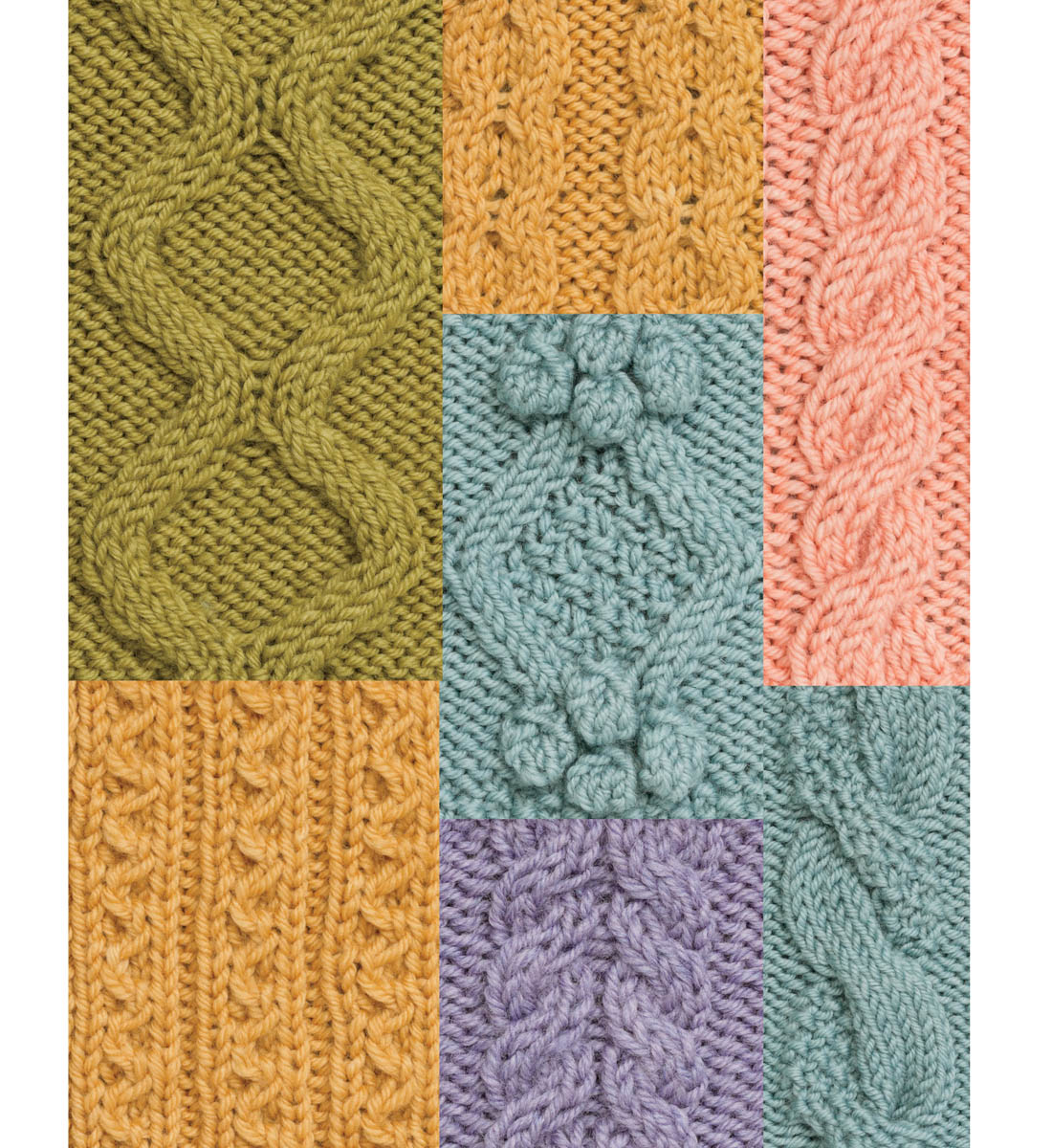This book is dedicated to Barbara G. Walker, whose enormous contribution to knitting literature has been inspiring and helping knitters like me for many years.
Contents
Introduction
The World of Cables
Welcome to the world of knitted cables, where a simple alteration to a basic pattern can become a new and unique design. My goal here is to explain the fundamentals of cable technique so you can not only look at a fisherman knit sweater and know how it was done, you can even design your own.
Cables twist to the right or to the left, depending on how you manipulate the stitches. Cables can twist together like ropes or travel apart and come together again, crossing or not. They can stand alone in a panel, or they can be repeated to create an allover design. Cables can float on a ground of reverse stockinette stitch, or they can be filled in with moss or seed stitch. They can be worked for the entire length of a fabric, or they can stand alone and look like appliqus. They can even form ribbing and be used to pull in the bottom of a hat or a sweater.
In this book well explore rope cables and other basic cables; angles and curves, including diamonds and circles; pretzels and braids; and fillers, ribbings, and allover patterns. Then we can spice things up by adding texture, color, and even beads to the cables. Well even dip into the world of creating reversible cables. The basic math necessary to combine cables of varied width and length will be covered, as will how to compensate for cable take-up and splay.
Youll also learn how to read cable charts. Various publications use different symbols to mean the same thing, but the methods of creating the cables remain the same. With charted designs you can see from the symbol how many stitches are involved in turning the cable, whether the cable will be crossing right or left, whether it uses only knit stitches or a combination of knit and purl, and any other details specific to the particular crossing.
Plain or fancy, cables allow you to make a one-of-a-kind product. You can choose from among the hundreds of cable designs that are available in books such as A Treasury of Knitting Patterns, A Second Treasury of Knitting Patterns, or Charted Knitting Designs, all by Barbara Walker; Vogue Knitting Stitchionary 2: Cables; The Harmony Guides 220 Aran Stitches and Patterns; or other collections. And with the understanding you gain here, you can alter any of those cable designs to make them unique, or even create your own.
Knit and cable on,
Chapter 1
Cable Basics
What is a knitted cable? The basis of a cable is that 1 or more stitches crosses 1 or more stitches immediately to the left or right of the original stitches; then all the stitches are knitted in this new order to create a pattern. To make the switch, a designated number of stitches is slipped to a cable needle; the cable needle is then held in front or in back of the work while you work a designated number of stitches from the left needle; finally, you work the stitches on the cable needle. The result will be a design of stitches that cross to the left or to the right, depending on whether you hold the cable needle with stitches in front or in back.
Terminology
Throughout the knitting literature available today, there are several terms used for the same cable action. For example, lets look at a 4-stitch cable where 2 stitches change places with the adjacent 2 stitches.
If the crossing goes to the left, you may see this cable called any of the following:
- C4L, cable four left
- C4F, cable four front
- 4LC, four left cross
- 4FC, four front cross
- 2/2LC, two over two left cross
- 2/2FC, two over two front cross
- 2/2L, two over two left
- 2/2F, two over two front
If the crossing goes to the right, youd see R (right) where the L appears or B (back) where the F appears in these names.
Now throw into the mix that cables can be worked in a combination of knit and purl stitches, meaning that knit stitches cross over purl stitches, and you may see these descriptors:
- C4LP, cable four left purl
- C4FP, cable four front purl
- 4LCP, four left cross purl
- 4FCP, four front cross purl
- 2/2LCP, two over two left cross purl
- 2/2FCP, two over two front cross purl
- 2/2LP, two over two left purl
- 2/2FP, two over two front purl
Since it is possible to make a cable crossing with 4 stitches that has 3 stitches crossing over 1, or vice versa, you can see that it can become quite confusing. For this reason, I use the 2/2 naming convention; if the crossing has 3 stitches over 1, it becomes 3/1. I also prefer the L for left and R for right rather than F for front and B for back the top stitches move left or right, and I can be sure Ive got it right by looking at it.
Because there is no standard, be sure you carefully read the explanations for cables in whatever publication youre using.
Symbols for Charting
The best way to present cable instructions is with charts. A chart can visually describe what is happening by showing a left or right cross, as well as knit and purl stitches.
In the next few pages, youll find symbols for the cable crossings used in this book. The key shows the symbol used, the abbreviation, and the method. Beginning , youll find a key to the other non-cable symbols used in the charts presented here.
Cable Symbols
 |
| 1/1L. Slip 1 stitch to cable needle and hold in front, knit 1 from left needle, knit 1 from cable needle. |
 |
| 1/1R. Slip 1 stitch to cable needle and hold in back, knit 1 from left needle, knit 1 from cable needle. |
 |
| 1/1LP. Slip 1 stitch to cable needle and hold in front, purl 1 from left needle, knit 1 from cable needle. |
 |
| 1/1RP. Slip 1 stitch to cable needle and hold in back, knit 1 from left needle, purl 1 from cable needle. |
 |

